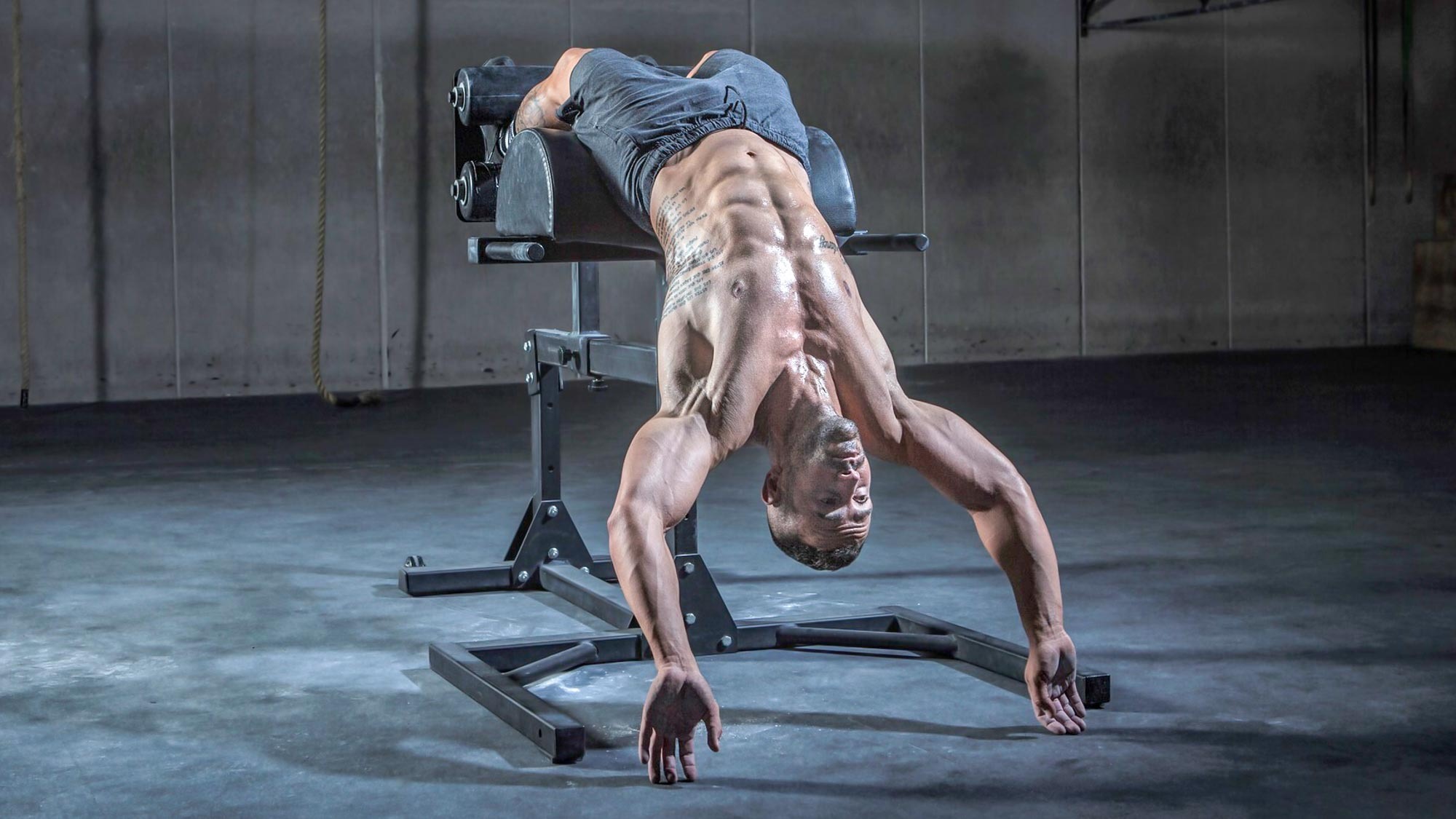
Bored of doing sit-ups? Why not mix things up with the GHD sit-up — an intense variation of the well-known abdominal exercise? The GHD sit-up stands for Glute Ham Developer and is actually a piece of gym equipment on which someone can do a sit-up, despite the fact that, as the name suggests, the GHD focuses on lower body muscles. To find out more, I challenged myself to do 15 GHD sit-ups every day for a week. There are other exercises that can be done on a GHD but, for the purpose of this experiment, I was focusing solely on sit-ups.
Yes, it might look a little odd, but the GHD sit-up is great for improving core strength, as well as core stability and hip mobility. Essentially, a GHD sit-up really requires a full range of motion as you lean back all the way on the machine before really recruiting the core muscles to drive yourself back up. Plus, the hip flexors (of which mine are incredibly tight) are firing up to help power the torso back to a sitting motion without any motion from the lower body. From my PT perspective, hip mobility is vital for avoiding lower back pain, plus it can help with general movement, from walking and running through to powerful gym-based exercises.
And if it’s a stronger core you’re after, then the GHD sit-up is a good addition to your core workouts, when done correctly. It fires up pretty much all the muscles in your core. From helping to avoid back and lower body injuries, to supporting our day-to-day movement and posture, core strength is vital.
How to do a GHD sit-up
It can feel a little odd getting into position for the GHD sit-up, so here’s how to do it correctly:
- Get into position by sitting on the pad and placing your feet between the rollers, toes pointing upwards.
- Your butt should be just off the side of the pad that’s furthest away from your feet, with knees a little bent and gaze towards your feet.
- Slide back on the pad and lower your body back, arms overhead. Your chest should be hanging off the GHD.
- Next, engage your core, straighten your legs, and bring your body to an upright position on the GHD. That’s one rep.
It’s really important to straighten your legs during the exercise so that the legs aren’t doing too much of the work, and instead, it’s your core muscles and hip flexors doing the bulk of the movement. If you feel pain in your back, stop the exercise, as it might exacerbate your pain. The same applies if you’re dealing with or recovering from a back injury.
I did 15 GHD sit-ups every day for a week — here’s what happened
GHD sit-ups are not easy
Thought you could just bash out 15 GHD sit-ups and be done with it. Think again. I work my core a lot but these sit-ups certainly challenged me. You need a lot of power to drive your body back up to a sitting position, with little input from the lower body (as your feet are basically trapped between the rollers). My core had to work really really hard during this exercise, and it didn’t take long for me to feel a deep ache in my midsection.
My back really felt it
After a couple of reps, my back started firing up as I powered my body upwards. I found it was my lower back that was activating, and I had to consciously try to think about my core and hip flexors doing the work, in a bid to stop my back from taking over.
The GHD sit-up worked my glutes
Interestingly, as I drove myself up into the sit-up, I noticed my glutes were also firing up. The glutes (the biggest muscle in the body) work with the muscles in your hips, so it’s only natural that they’d be working during a GHD sit-up. In my opinion, anything that makes my glutes stronger is a winner; we need strong glutes for all forms of movement.
The fear is real
You put a lot of trust into the GHD when doing one of these sit-ups. Your entire body is held by the two rollers which clamp around your feet. So when I leaned back, I did have some fear that the rollers would break off, or my feet would slide out and I’d just fall backward off the machine. Overcoming this simply involved changing my mindset and realizing that the GHD has been made to safely hold me in place. However, I could still feel my heart racing!
The stretch is great
It’s not often you get to really lean back and stretch out your back, but a GHD sit-up lets you do just that. I actually found leaning back over the padded seat, extending my arms overhead to the floor, very relaxing and it really helped to open out my chest and back. If you spend a lot of time sitting behind your desk, this is a nice stretch to try.
I did 15 GHD sit-ups every day for a week — here’s my verdict
Will I continue to use GHD sit-ups in my ab routine? Probably not, purely because my back didn’t seem to enjoy the exercise, and there are other ways to target my abdominal muscles. I’m wary of back pain and doing anything that might cause damage, and because I could only last a few reps of these before my back started doing most of the work, I don’t think these are for me.
On the flip side, the GHD sit-up is really good for testing and improving mobility, plus that back stretch really is second to none. Give them a go next time you’re in the gym.







